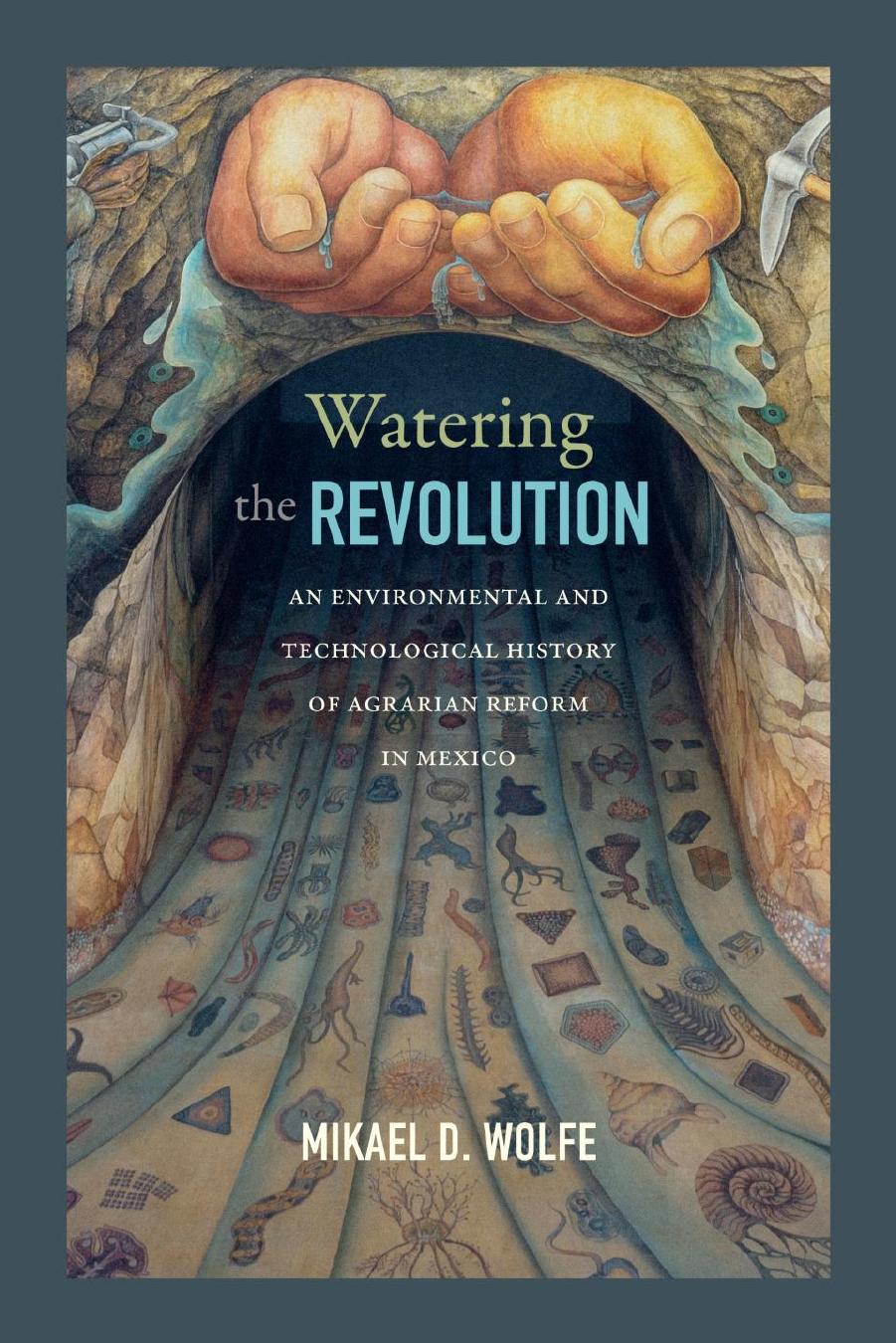Watering the Revolution: An Environmental and Technological History of Agrarian Reform in Mexico by Mikael D. Wolfe

Author:Mikael D. Wolfe
Language: eng
Format: epub, pdf
Tags: History, Latin America, Mexico, Nature, Environmental Conservation & Protection
Publisher: Duke University Press
Published: 2017-06-23T01:12:56.607000+00:00
FIG. 5.1 Sculpture of Cárdenas at the dam that bears his name, flanked on each side by his workers and técnicos. Photograph by the author, 2006.
Mike Davis explains that drought is “the recurrent duel between natural rainfall variability and agriculture’s hydraulic defenses,” and thus “always has a man-made dimension.” He distinguishes drought from hydrological drought, the latter a phenomenon that “occurs when both natural [streams, lakes, and aquifers] and artificial [reservoirs, wells, and canals] water-storage systems lack accessible supplies to save crops.” As a result, he maintains, “Hydrological drought always has a social history.”6 In a detailed analysis of the social and ecological dimensions of the Laguna’s agroindustrial economy in the 1980s, the Mexican social scientists Rolando García and Susana Sanz similarly define drought as “a social perception of water deficiency with respect to a socially defined norm on the Nazas-Aguanaval River Basin for agriculture and domestic water needs.”7
Técnicos and local water users alike formed their social perception of water deficiency by the water level of the Palmito Dam reservoir. By this measure, during the mini–Dust Bowl of the late 1940s and 1950s, as the reservoir plunged to a fraction of full capacity, they judged the Laguna calamitously water deficient. Laguna agriculture thereby became more dependent than ever on groundwater pumping, despite the fact that, beginning in 1948, the SRH’s rapidly advanced geohydrological knowledge of Mexico’s aquifers had led it to decree a series of vedas (prohibitions on pumping). As secretary of the SAF under Ávila Camacho, Gómez had been fully aware of this reality, yet after he left office in 1946 he still energetically worked to form Worthington de México, the Mexican subsidiary of the New York–based multinational Worthington Pump and Machinery. Worthington de México was officially inaugurated with much fanfare in 1951 in Mexico City. As president in the 1950s, Gómez was instrumental in establishing the machinery supply store Equipos Mecánicos de La Laguna (Mechanical Equipment of the Laguna) in 1956, which directly stocked and sold his company’s domestically manufactured groundwater pumps.
Download
Watering the Revolution: An Environmental and Technological History of Agrarian Reform in Mexico by Mikael D. Wolfe.pdf
This site does not store any files on its server. We only index and link to content provided by other sites. Please contact the content providers to delete copyright contents if any and email us, we'll remove relevant links or contents immediately.
| Arms Control | Diplomacy |
| Security | Trades & Tariffs |
| Treaties | African |
| Asian | Australian & Oceanian |
| Canadian | Caribbean & Latin American |
| European | Middle Eastern |
| Russian & Former Soviet Union |
The Secret History by Donna Tartt(18948)
The Social Justice Warrior Handbook by Lisa De Pasquale(12168)
Thirteen Reasons Why by Jay Asher(8847)
This Is How You Lose Her by Junot Diaz(6833)
Weapons of Math Destruction by Cathy O'Neil(6216)
Zero to One by Peter Thiel(5733)
Beartown by Fredrik Backman(5679)
The Myth of the Strong Leader by Archie Brown(5458)
The Fire Next Time by James Baldwin(5382)
How Democracies Die by Steven Levitsky & Daniel Ziblatt(5172)
Promise Me, Dad by Joe Biden(5113)
Stone's Rules by Roger Stone(5052)
A Higher Loyalty: Truth, Lies, and Leadership by James Comey(4907)
100 Deadly Skills by Clint Emerson(4880)
Rise and Kill First by Ronen Bergman(4739)
Secrecy World by Jake Bernstein(4701)
The David Icke Guide to the Global Conspiracy (and how to end it) by David Icke(4657)
The Farm by Tom Rob Smith(4465)
The Doomsday Machine by Daniel Ellsberg(4449)
